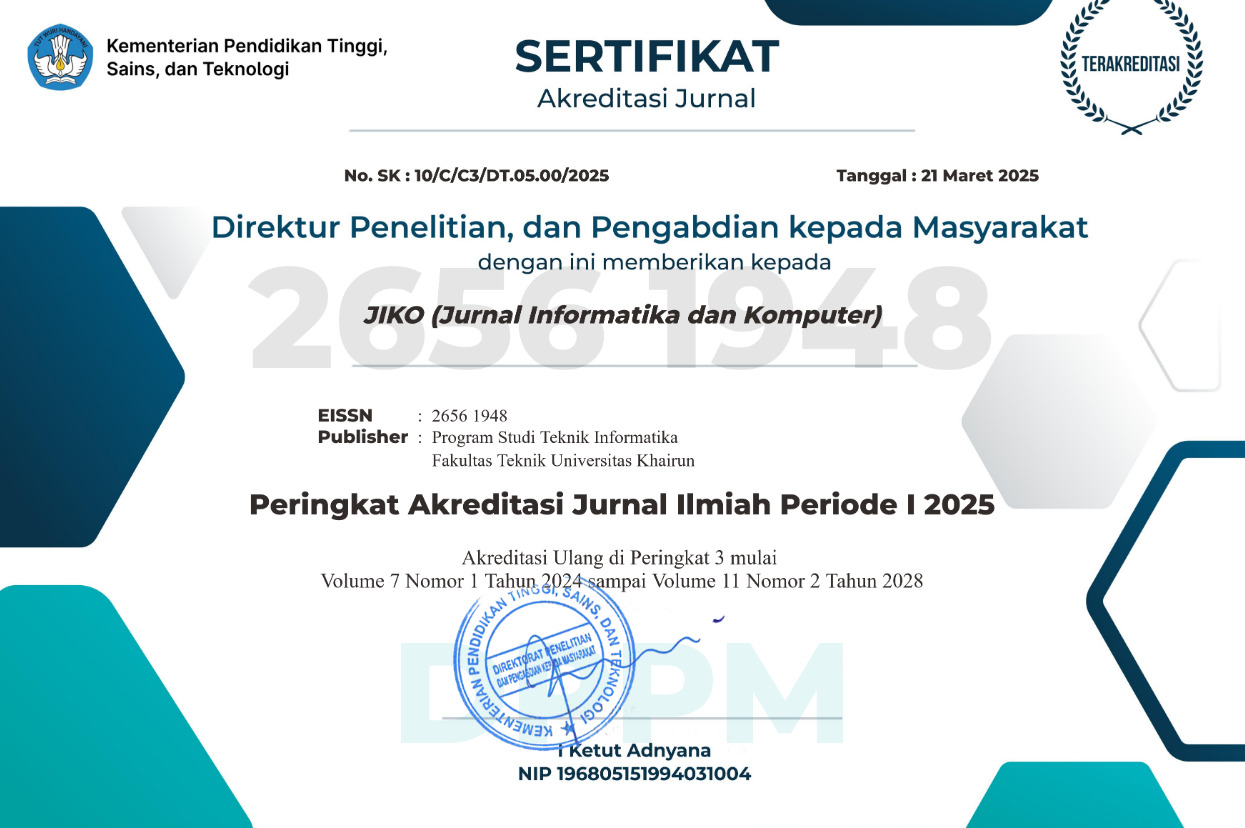SUPPORT VECTOR MACHINE (SVM) ALGORITHM FOR STUDENT SENTIMENT ANALYSIS OF ONLINE LECTURES
Abstract
Covid-19 was first discovered in Wuhan City, Hubei Province, China at the end of December 2019. According to the WHO (World Health Organization) as of October 13 2020, the number of positive confirmed cases of Covid-19 reached 38,103,332 cases, while in Indonesia the number of cases exposed to Covid-19 reached 268.85 cases and is likely to increase every day (Covid-19 Handling Task Force, 2020). The formulation of the problem that will be raised from this research is to measure the level of accuracy obtained from the results of classifying sentiments of distance learning during the Covid-19 pandemic using the Support Vector Machine (SVM) method and measuring the impact of implementing online lectures during the Covid-19 pandemic. The data used in this research is in the form of public responses regarding distance learning policies implemented during the Covid-19 pandemic, taken from January to March 2022. The data obtained will then be divided into training data as much as 80% of the the total data and test data is 20% of the total data. Based on the results of testing the previous Support Vector Machine classification model, the accuracy value for the entire system can be calculated at 70.8%. Based on the results of testing the previous Support Vector Machine classification model, the accuracy value for the entire system can be calculated at 70.8%.
Full Text:
PDFReferences
N. Astini, "Utilization of Information Technology in elementary school level learning during the Covid-19 pandemic,"The Light Journal.vol. 11(2), p. 13-25, 2020.
C. S. H. R. Manning, "Introduction To Information Retrieval Cambridge university Press," 2008.
M. G. L. Berry, "Data Minning For Marketing and Customer Support. New York: Jhon Willey & Sons," 1999.
S. j. Feldman R, "The Text Mining Handbook: Advanced Approaches In Analyzing unstructured Data. Cambridge university Press," 2007.
J. L. L. C. Wang S, "Adapting Naive Bayes Tree For Text Classification. Knowledge And Information System.," vol. 44(1), pp. 77-89.59, 2015.
W. Y. Mooney R, "Learing For Semantic Parsing With Statistical Machine Translation.," In Proceedings of The Human Language Technology Conference of The NAACL, flight. 2(1), no. 5758, pp. 439-446, 2006.
H. J. H. Goldberg D. E, "Genetic Algorithms and Machine learning," Machine learning, vol. 3(2), p. 95-99, 1988.
C. P. Somvanshi M, "A Review Of Machine learning Techniques using Decision Tree And Support Vector Machine," 2016 Interantional Conference on Computing Communcation Control and Automation (ICCUBEA), pp. 1-7, 2020.
Z. M, "Classification of Offensive Sentences on Social MediaTwitter Using the MethodNaive Bayes Classifier.," Doctoral Dissertation, State Islamic University of Sultan Syarif Kasim Riau,vol. 2(5), p. 107-110, 2019.
L. B., "Web Crawling. In Web Data mining," Exlporing Hyperlinks, Content, and Usage Data.Chicago:Springer, pp. 311-362, 2011.
DOI: https://doi.org/10.33387/jiko.v6i1.5836
Refbacks
- There are currently no refbacks.











